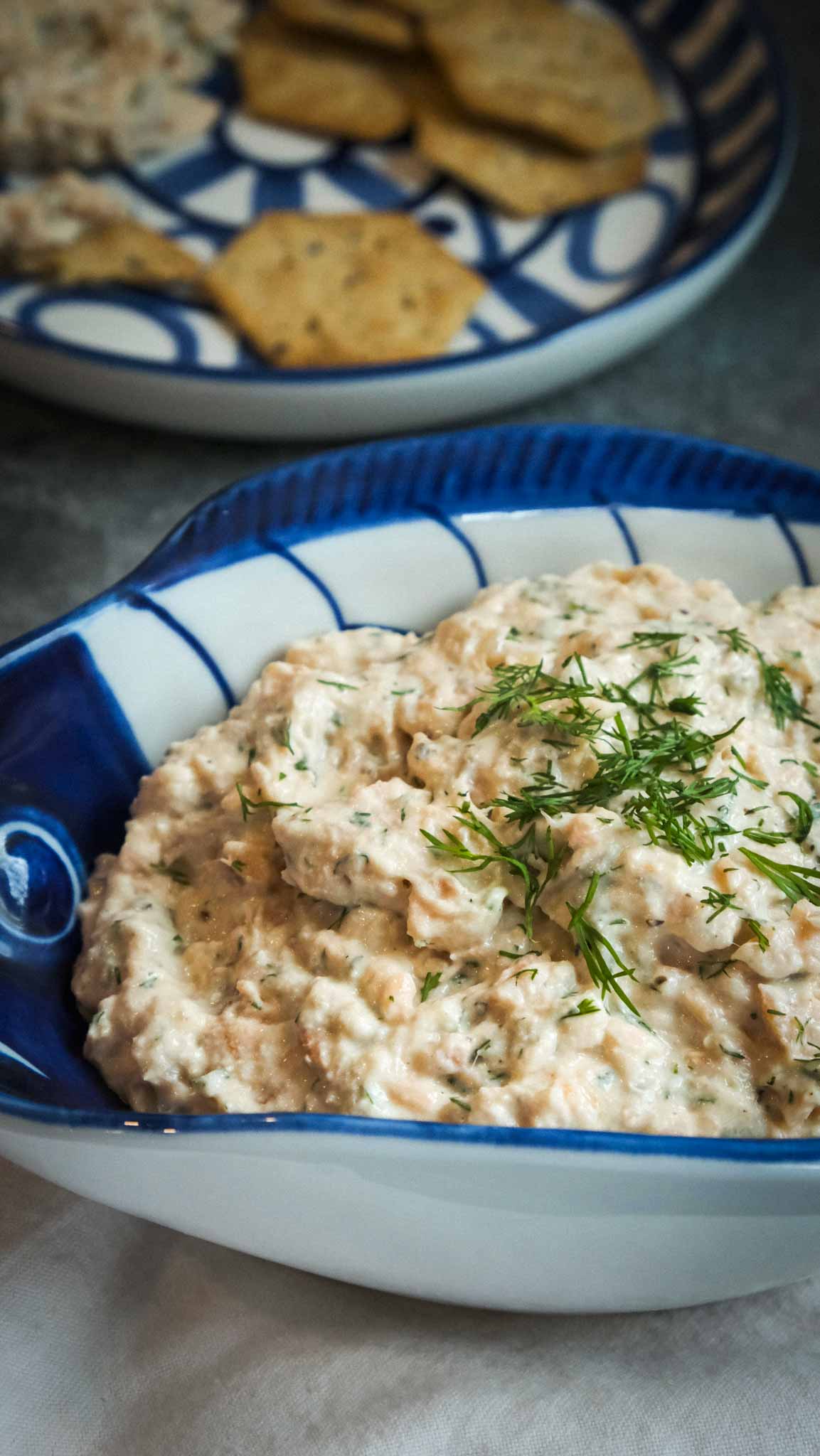
This post may contain affiliate links. See my full disclosure HERE.
hot smoked salmon dip
This is a recipe for smoked salmon dip (with leftover salmon) from the hot smoked salmon I cooked in my last post. The smoked salmon is the clear star of this dip, the meat is soft and perfectly seasoned and the smoke complements the protein like no other. Combining creaminess, tanginess, salt and smoke, this dip covers all the bases.
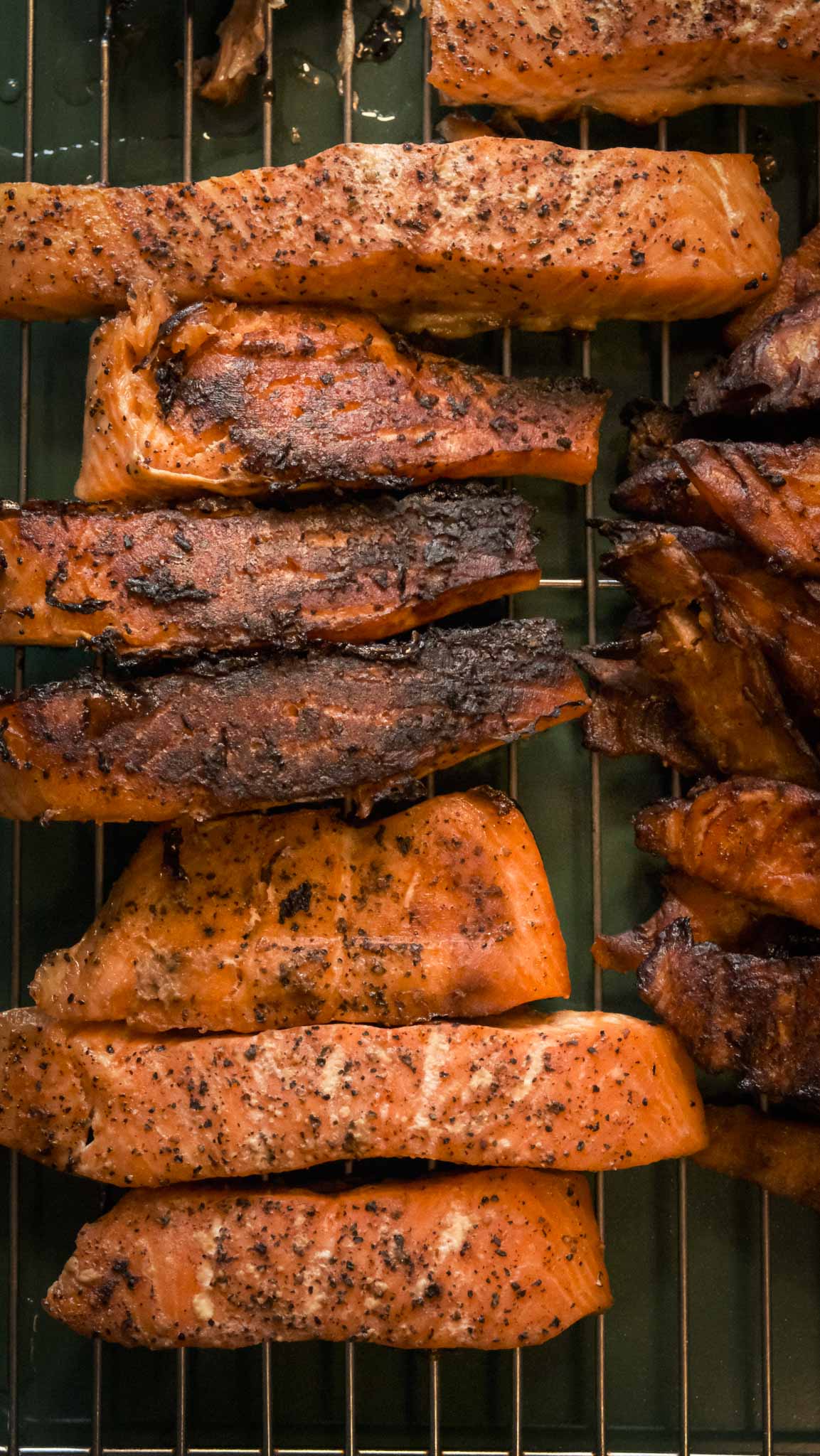
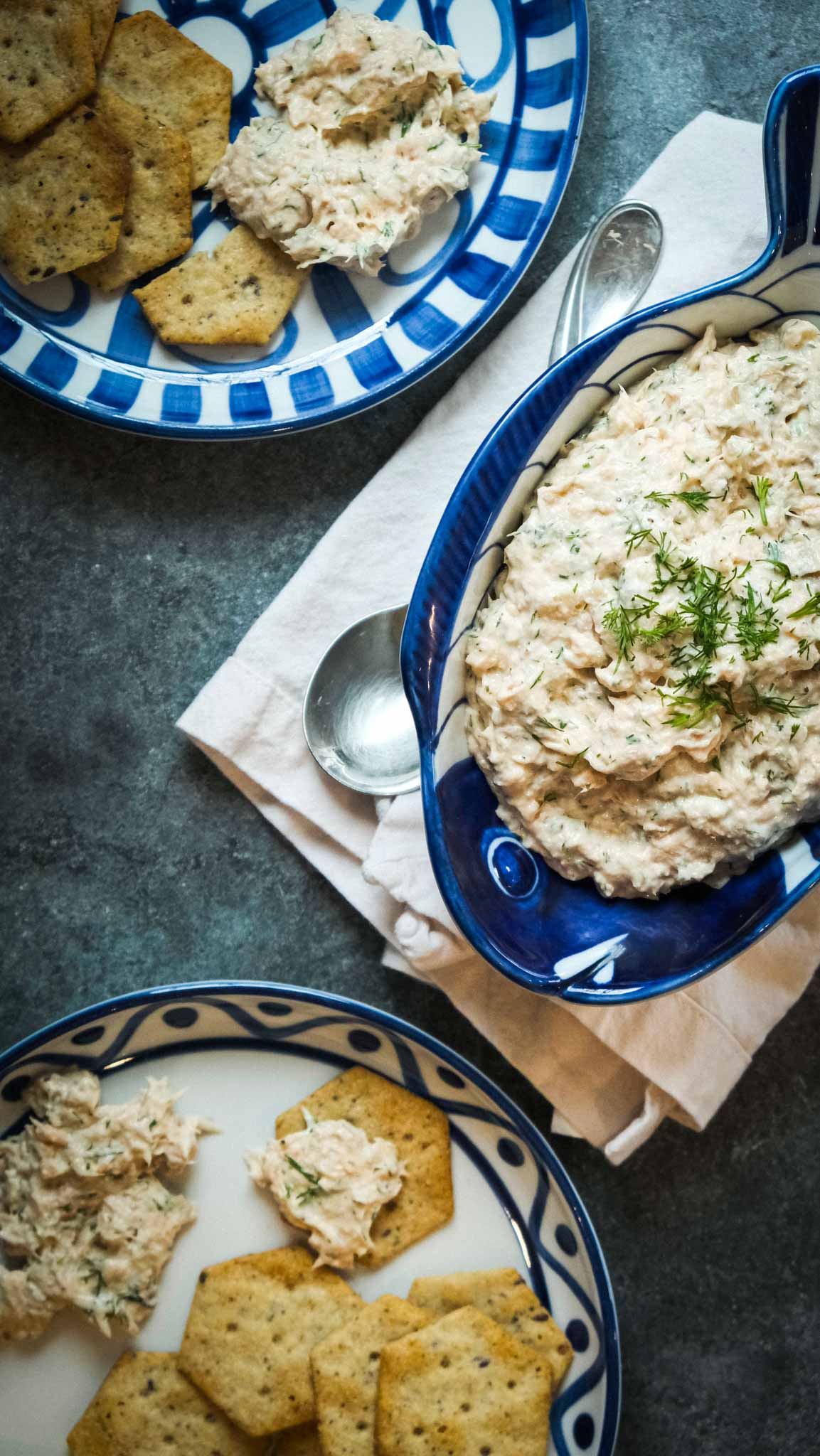
One of my favorite things to do with a portion of the smoked salmon is to make a creamy(dairy-free) dip that you can enjoy with crackers, veggies, toast or on eggs.
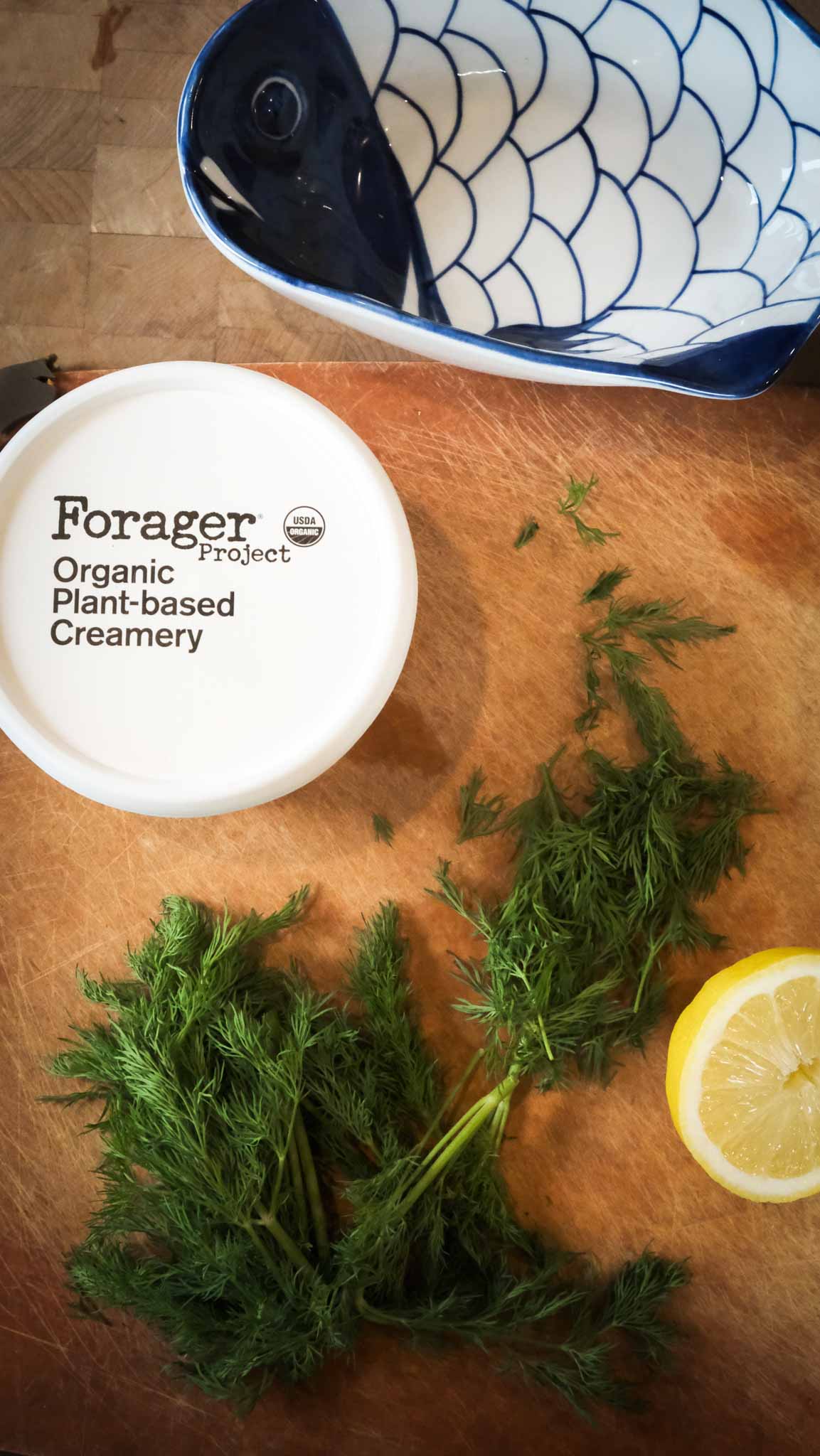
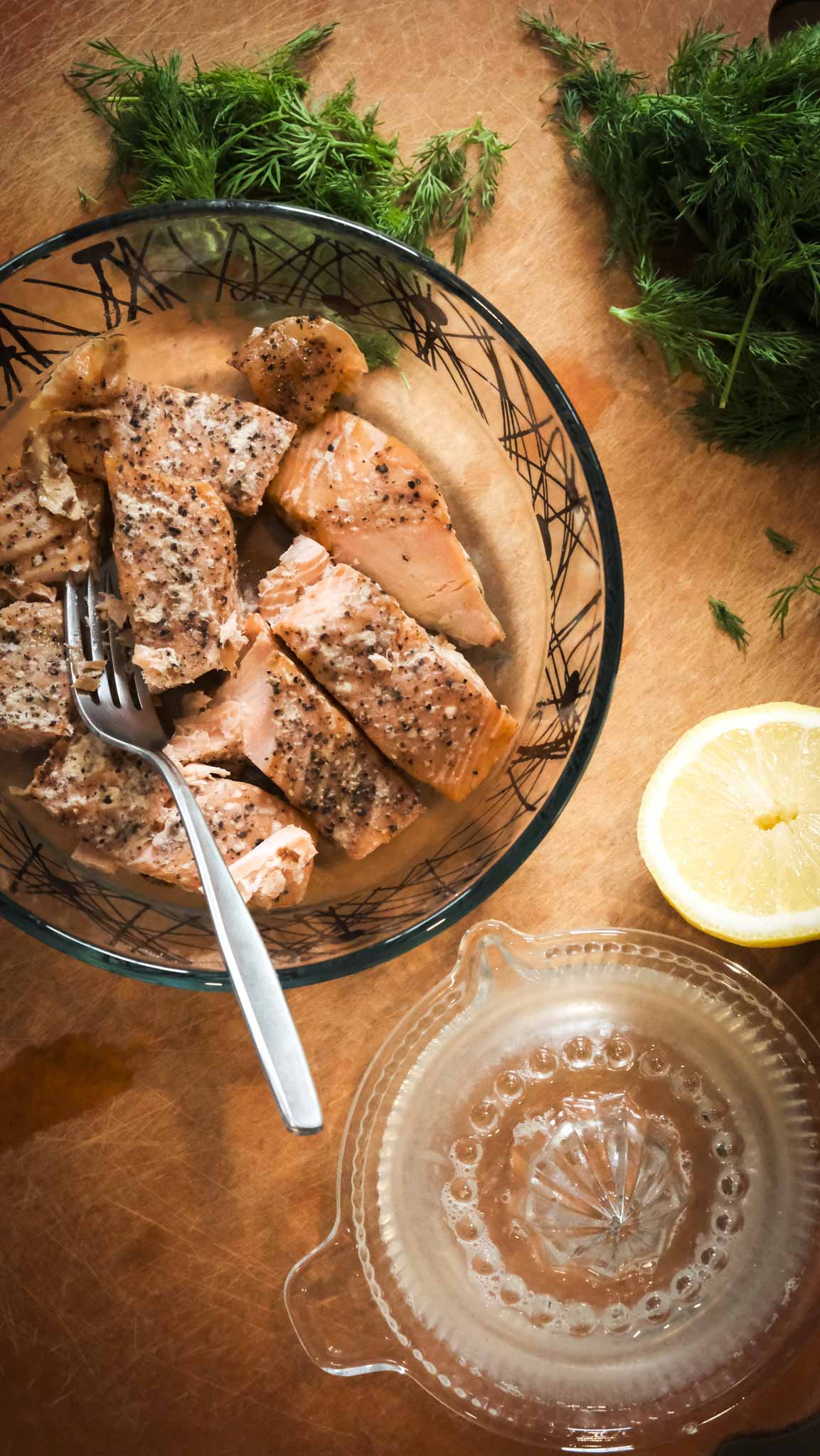
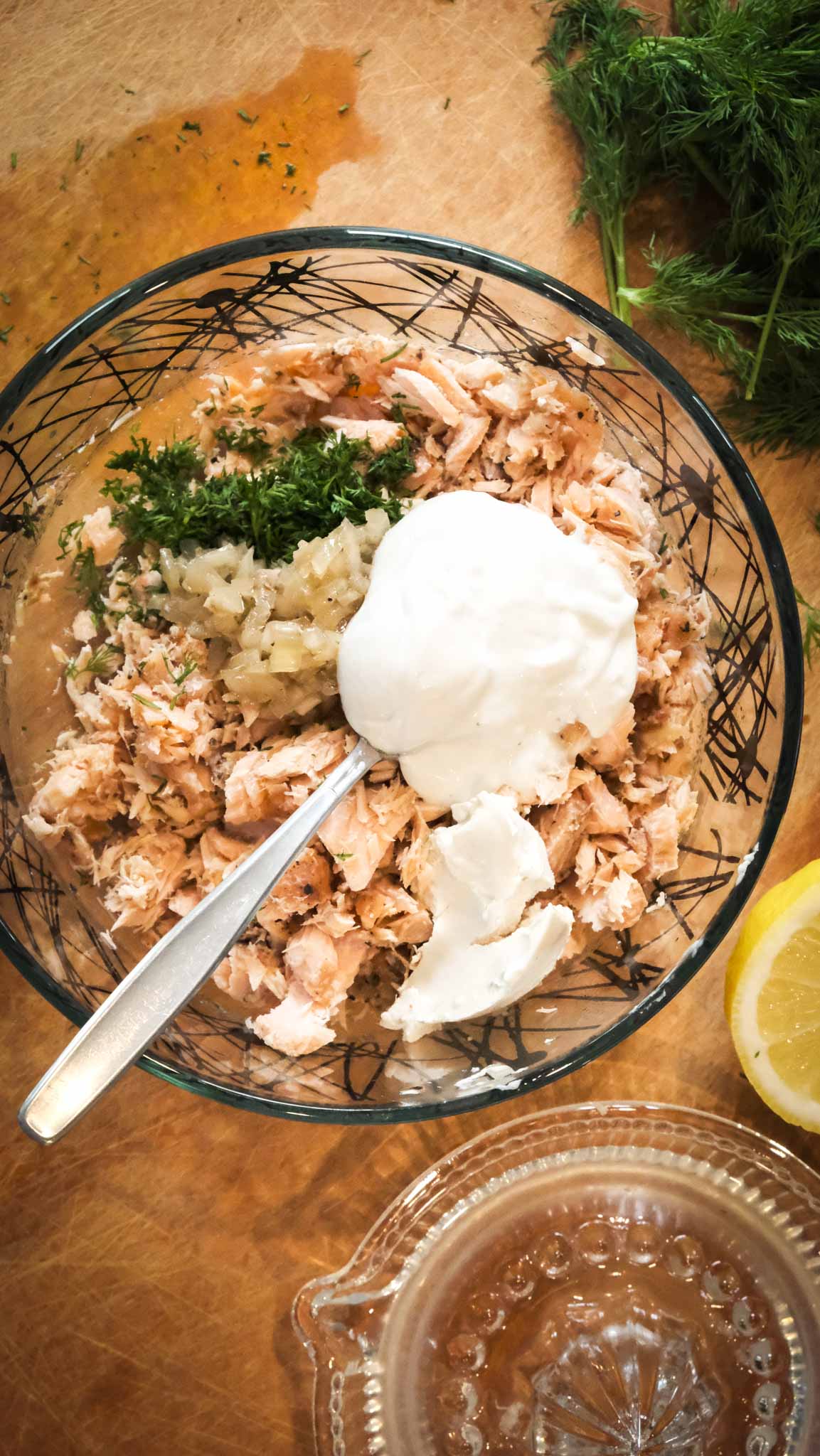
healthy smoked salmon dip
Ingredients:
- 12-14 ounces of hot smoked salmon, cooled
- 1/4 cup Forager brand sour cream (dairy-free)
- 3 tablespoons Forager brand cream cheese (dairy-free)
- 1/2 teaspoon horseradish
- 1 tablespoon fresh dill, chopped
- 1 small shallot, marinated in seasoned rice vinegar
- 1/2 lemon, juiced
- 1/2 tablespoon Dijon mustard
- Salt and pepper to taste
Directions:
Combine ingredients and incorporate fully. Serve cold or room temperature. Pair with crackers, veggies, toast or on eggs
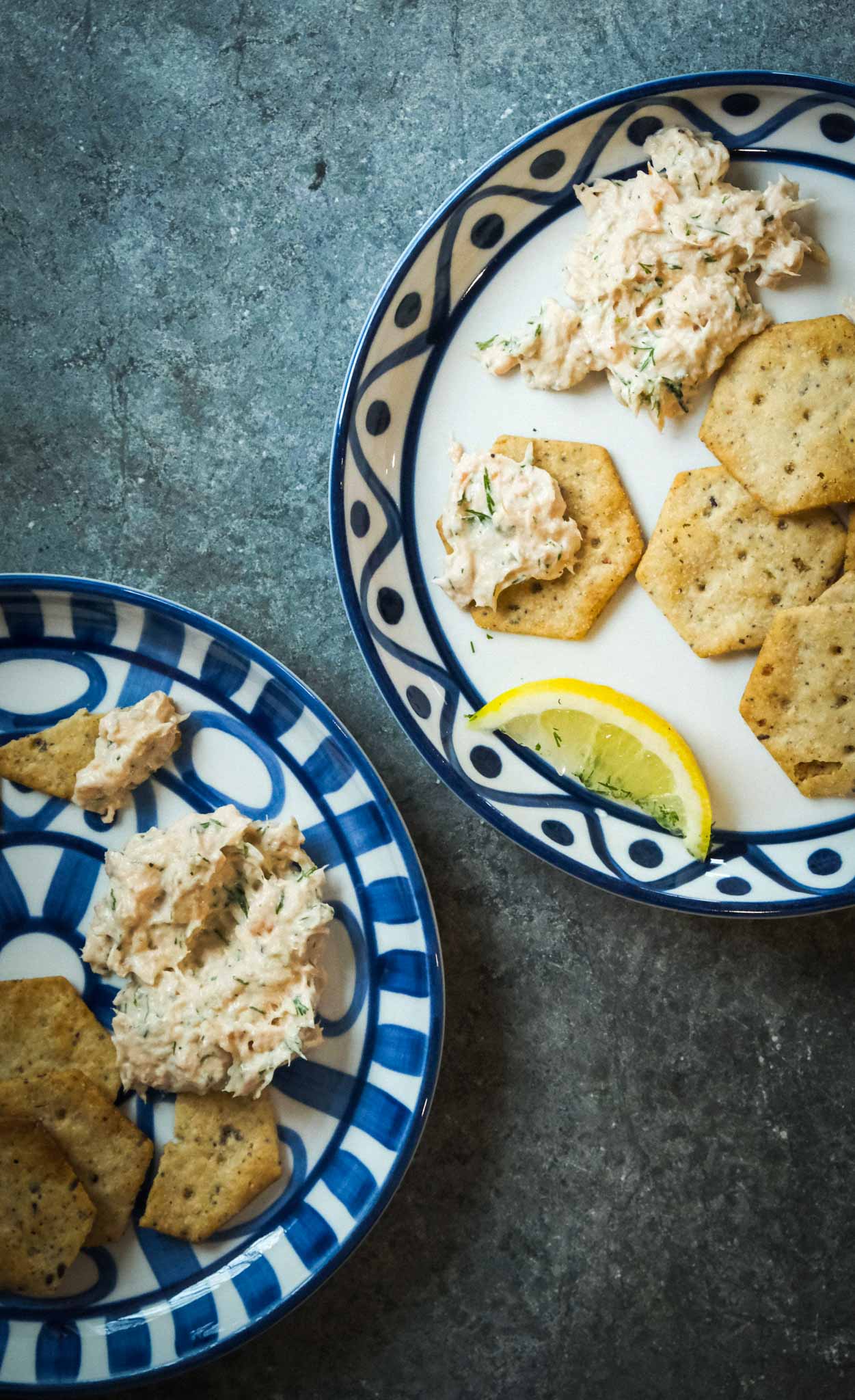
simple smoked salmon dip notes:
wild salmon vs farmed salmon:
There are some key differences between wild-caught and farm-raised salmon, and there is ongoing debate about which one may be better. Here are some of the differences:
- Nutrition: Wild-caught salmon tends to be leaner and contain fewer calories and saturated fats than farm-raised salmon. Wild salmon also tends to have higher levels of beneficial omega-3 fatty acids and vitamins and minerals. This is because wild salmon eat a natural diet and have more room to swim, whereas farm-raised salmon are often fed a processed diet and kept in crowded conditions.
- Contaminants: Farm-raised salmon may contain higher levels of contaminants, such as PCBs, dioxins, and antibiotics, than wild-caught salmon. This is because farm-raised salmon may be exposed to more pollutants in their environment or feed.
- Sustainability: Wild-caught salmon is generally considered more sustainable because it is caught in a way that does not harm the environment or deplete fish populations. In contrast, some farming practices can have negative impacts on the environment, such as polluting waterways or spreading diseases to wild fish populations.
In terms of which one is better, it really depends on your priorities. If you are looking for a leaner, more nutritious option, wild-caught salmon may be a better choice. If you are concerned about sustainability, wild-caught salmon is generally considered more environmentally friendly. However, if you are on a budget or prefer a milder flavor, farm-raised salmon may be a more practical choice. Regardless of which one you choose, both wild-caught and farm-raised salmon can be part of a healthy and balanced diet.
Alaskan versus Atlantic Salmon:
Atlantic salmon and Alaskan salmon differ in several ways, including their taste, nutritional content, and sustainability. Here are some key differences:
- Taste: Atlantic salmon has a milder, buttery flavor, while Alaskan salmon tends to be richer and more flavorful. The flavor of Alaskan salmon can vary depending on the species and where it was caught.
- Nutritional Content: Alaskan salmon tends to be leaner and have a firmer texture than Atlantic salmon. Alaskan salmon is also known for its high levels of beneficial omega-3 fatty acids, which can help lower the risk of heart disease and improve brain function. Atlantic salmon has slightly lower levels of omega-3s but is still a good source of protein and other essential nutrients.
- Sustainability: Alaskan salmon is considered one of the most sustainable types of salmon because of the strict regulations on fishing and the efforts to protect wild salmon populations. In contrast, Atlantic salmon is often farmed, and farming practices can have negative impacts on the environment, such as pollution and disease transmission.
In terms of which one is better, it really depends on your priorities. If you are looking for a sustainable option, Alaskan salmon is generally considered the better choice. If you prefer a milder flavor, Atlantic salmon may be a better option. However, both types of salmon are nutritious and can be part of a healthy diet. It’s also worth noting that the way the fish is cooked and prepared can also affect its nutritional value and taste.
Salmon nutrition | is smoked salmon good for you?
Salmon is a nutritious fish that is rich in protein, omega-3 fatty acids, and a variety of vitamins and minerals. Here are some of the nutritional facts and benefits of salmon:
Nutritional Facts:
- A 100-gram serving of salmon contains around 208 calories, 20 grams of protein, and 13 grams of fat, including healthy omega-3 fatty acids.
- Salmon is a good source of vitamin D, vitamin B12, and selenium, and also contains smaller amounts of other vitamins and minerals, including niacin, phosphorus, and potassium.
Smoked salmon nutrition benefits:
- Heart Health: The omega-3 fatty acids found in salmon can help lower blood pressure, reduce inflammation, and decrease the risk of heart disease and stroke.
- Brain Health: The same omega-3 fatty acids that benefit the heart also support brain health, helping to improve cognitive function, memory, and mood.
- Eye Health: The high levels of omega-3s found in salmon also promote eye health, reducing the risk of macular degeneration and other vision problems.
- Bone Health: The vitamin D and calcium found in salmon can help improve bone density and reduce the risk of osteoporosis.
- Inflammation Reduction: Salmon contains bioactive peptides that have been shown to reduce inflammation in the body, helping to prevent and alleviate various diseases.
Overall, salmon is a nutrient-dense food that can provide a wide range of health benefits.

Smoked salmon dip (with leftover salmon)
Ingredients
- 12-14 ounces of hot smoked salmon, cooled
- 1/4 cup Forager brand sour cream (dairy-free)
- 3 tablespoons Forager brand cream cheese (dairy-free)
- 1/2 teaspoon horseradish
- 1 tablespoon fresh dill, chopped
- 1 small shallot, marinated in seasoned rice vinegar
- 1/2 lemon, juiced
- 1/2 tablespoon dijon mustard
- Salt and pepper to taste
Instructions
- Combine ingredients and incorporate fully. Serve cold or room temperature. Pair with crackers, veggies, toast or on eggs
I hope you enjoy this smoked salmon dip (with leftover salmon) and don’t forget to check hot my original hot smoked salmon recipe that this dip is derived from.
I’d love to hear about some of your favorite salmon dip recipes , so please leave a comment below. If you try out my recipe and make any changes or additions, feel free to share those as well! You can also find more of my food journey on Pinterest at Molé in the Wall, where I share my favorite recipes.
tags: Alaska smoked salmon dip recipe, best smoked smoked salmon dip recipe, smoked salmon dip recipe without cream cheese


